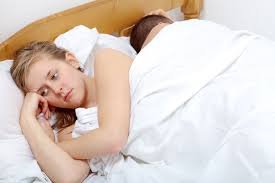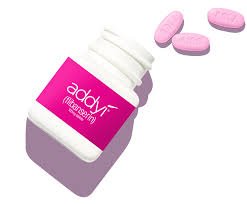Low Sexual Desire in Women: Understanding Hypoactive Sexual Desire Disorder (HSDD) and Treatment Options
Sexual desire fluctuates naturally over time, influenced by age, hormonal changes, stress, relationships, and overall health. However, when low libido significantly impacts a woman's quality of life or causes distress, it may be classified as hypoactive sexual desire disorder (HSDD)—a recognized medical condition that affects millions of women worldwide.
What is Hypoactive Sexual Desire Disorder (HSDD)?
HSDD is a persistent or recurrent lack of sexual desire that leads to personal distress. It is not just a temporary dip in libido but an ongoing issue that affects emotional well-being, self-esteem, and relationships.
Symptoms include:
Loss of interest in sexual activity (with or without a partner)
Lack of sexual thoughts or fantasies
Distress or frustration related to low desire
Decline in responsiveness to sexual stimulation or cues
HSDD can occur at any stage of life, but it is particularly common in perimenopause, menopause, and postpartum due to hormonal shifts.
What Causes Low Sexual Desire?
Multiple factors contribute to low libido, including:
Hormonal Changes
Menopause & Perimenopause – Declining estrogen and testosterone levels can reduce sexual desire, vaginal lubrication, and overall arousal.
Postpartum & Breastfeeding – Prolactin increases while estrogen and testosterone drop, suppressing libido.
Birth Control & Medications – Some hormonal contraceptives, antidepressants (SSRIs), and blood pressure medications can dampen sexual desire.
Psychological & Emotional Factors
Stress, anxiety, and depression
Body image concerns and low self-esteem
History of trauma or negative sexual experiences
Relationship Dynamics
Unresolved conflicts with a partner
Mismatched libidos
Lack of intimacy or emotional connection
Medical Conditions & Lifestyle Factors
Thyroid disorders
Chronic illnesses (e.g., diabetes, cardiovascular disease)
Poor sleep, excessive alcohol consumption, smoking
Treatment Options for Low Sexual Desire in Women
The good news is that low libido can be addressed through various approaches. Treatment depends on the root cause and personal preferences.
1. Lifestyle & Behavioral Changes
Regular Exercise – Improves circulation, mood, and body confidence.
Mindfulness & Stress Reduction – Meditation, deep breathing, and therapy help alleviate anxiety.
Quality Sleep – Essential for hormonal balance and energy levels.
2. Hormone Therapy (HT)
Testosterone Therapy – Small doses of testosterone may help boost libido in postmenopausal women and can also be trialed in perimenopausal women.
Estrogen Therapy – Improves vaginal health and increases blood flow, enhancing arousal.
DHEA (Prasterone) – A vaginal insert that may help with sexual function and lubrication.
3. FDA-Approved Medications
Flibanserin (Addyi) – A daily non-hormonal pill for premenopausal women, working on brain neurotransmitters like serotonin and dopamine.
Addyi works on three key brain chemicals involved in sexual desire:
Increases dopamine (associated with motivation and reward)
Increases norepinephrine (enhancing arousal)
Decreases serotonin (which can suppress sexual desire)
Bremelanotide (Vyleesi) – A self-injected medication used on-demand before sexual activity, affecting brain pathways linked to desire.
Vyleesi is a melanocortin receptor agonist. It activates MC4 receptors in the brain, which are pathways linked to sexual arousal, blood flow, and how your brain responds to touch and romantic or flirty gestures.
It increases dopamine (a neurotransmitter that enhances pleasure and motivation), which may lead to improved sexual desire.
Unlike Addyi, which works by altering long-term brain chemistry, Vyleesi is taken approximately 45 minutes before sexual activity for a temporary increase in libido.
4. Counseling & Sex Therapy
Cognitive Behavioral Therapy (CBT) to address negative thought patterns.
Mindfulness-based techniques to enhance arousal and pleasure.
Couples therapy to improve communication and intimacy.
Did you know there are TWO types of sexual desire? Yup, you heard that right. Read more about responsive sexual desire and spontaneous sexual desire in these helpful links.
What’s Your Sexual Desire, Dr. Elizabeth Perri, PsychD
I’m a sex educator. Here’s the biggest myth about desire in long-term relationships
Video Clip: Spontaneous vs responsive desire: with Dr Laurie Mintz
5. Addressing any underlying health concerns
Pelvic pain, urinary issues, and vaginal dryness all lead to low sexual desire.
Pelvic Floor Therapy can be a helpful tool in improving pain and discomfort, leading to improved desire.
6. Erotica
Yes, you read, but I read. Erotica is scientifically proven to not only increase sexual desire but also arousal.
This resource comes in many forms and it is best to find what feels right for you.
OMGYES.com and Rosy App are excellent resources
Don’t forget about good old fashion romantic novels
Final Thoughts
Low sexual desire in women is a complex issue influenced by multiple factors.
The key to improving libido is identifying and addressing the underlying cause—whether hormonal, emotional, or relational. If you’re experiencing persistent low desire that affects your well-being, don’t hesitate to bring your concerns up.
With the right approach, fulfilling sexual health is within reach.
Resources & Next Steps
If you're struggling with low libido, consider booking an appointment to discuss your treatment options.
A personalized approach to treatment can make all the difference.
Here are more helpful resources:
Books:
You Are Not Broken by Kelly Casperson
Come Together by Emily Nagoski
Becoming Cliterate by Laurie Mintz
Better Sex Through Mindfulness by Lori Brotto
Desire: An Inclusive Guide to Navigating Libido Differences in Relationships by Laurie Mersy and Jeniffer Vencill
Mating in Captivity by Esther Perel







